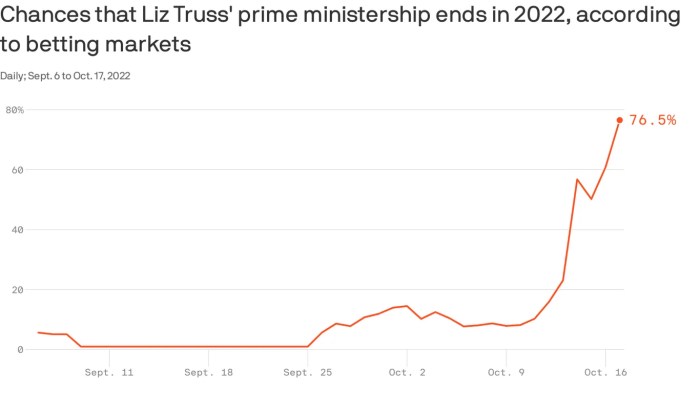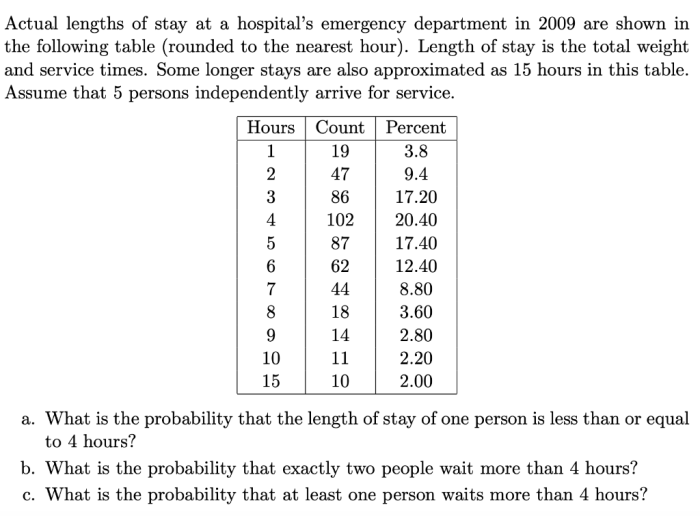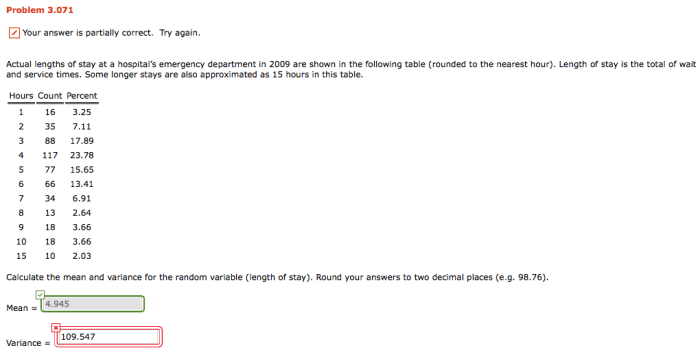Actual lengths of stay at a hospital’s emergency department (ED) are a critical metric for assessing hospital performance and patient outcomes. Understanding the factors that influence ED length of stay is essential for improving patient care and optimizing hospital operations.
This guide provides a comprehensive overview of data collection, analysis, and implications of actual lengths of stay in the ED.
Data collection methods for ED length of stay include retrospective chart reviews, prospective data collection, and electronic health record (EHR) data extraction. Accurate data collection is crucial for reliable analysis and decision-making. Statistical methods for analyzing ED length of stay include descriptive statistics, regression analysis, and time-series analysis.
These methods help identify trends, patterns, and relationships between patient characteristics, hospital characteristics, and length of stay.
Actual Lengths of Stay at a Hospital’s Emergency Department

Actual lengths of stay (ALOS) in a hospital’s emergency department (ED) are a critical measure of patient flow and resource utilization. Accurate data on ALOS is essential for effective planning, decision-making, and quality improvement initiatives.
Data Collection

Data on ALOS can be collected through various methods, including:
- Medical records review: Retrospective analysis of patient charts to extract information on ED arrival and departure times.
- Electronic health records (EHRs): Automated data extraction from EHR systems, providing real-time access to ALOS data.
- Direct observation: Manual recording of patient arrival and departure times by staff members.
Accurate data collection is crucial to ensure reliable ALOS measurements. Potential challenges include missing or incomplete data, inconsistent documentation practices, and data entry errors.
Analysis of Lengths of Stay
Statistical methods are used to analyze ALOS data and identify trends and patterns. Common methods include:
- Descriptive statistics: Calculating mean, median, and range of ALOS values.
- Time-series analysis: Identifying patterns and trends in ALOS over time.
- Regression analysis: Examining the relationship between ALOS and various factors, such as patient characteristics and hospital resources.
Relevant metrics include average ALOS, median ALOS, and percentage of patients exceeding target ALOS.
Factors Influencing Lengths of Stay, Actual lengths of stay at a hospital’s emergency department
Numerous factors can influence ALOS, including:
- Patient characteristics: Age, comorbidities, severity of illness, and social support.
- Hospital characteristics: Bed availability, staffing levels, and ED design.
- Operational factors: Triage processes, patient flow management, and availability of diagnostic and treatment services.
Understanding these factors is crucial for developing targeted interventions to reduce ALOS.
Comparison of Actual and Expected Lengths of Stay
Comparing actual ALOS to expected ALOS is essential for evaluating performance and identifying areas for improvement.
Expected ALOS can be established through:
- Benchmarks: Comparing ALOS to national or regional averages.
- Targets: Setting specific ALOS goals based on hospital-specific factors.
Discrepancies between actual and expected ALOS may indicate inefficiencies, bottlenecks, or areas for optimization.
Implications for Hospital Operations
ALOS has significant implications for hospital operations:
- Resource allocation: ALOS influences the need for beds, staff, and equipment.
- Staffing: High ALOS can lead to increased workload and burnout among staff.
- Patient flow: Extended ALOS can result in ED overcrowding and delays in patient care.
Strategies to improve efficiency and reduce ALOS include implementing fast-track protocols, optimizing triage processes, and enhancing patient flow management.
Patient Experience and Outcomes
ALOS can impact patient experience and outcomes:
- Patient satisfaction: Extended ALOS can lead to decreased patient satisfaction.
- Recovery: Prolonged ED stays can delay treatment and recovery.
- Overall outcomes: High ALOS has been associated with increased risk of adverse events and mortality.
Initiatives to improve patient experience while managing ALOS include providing timely updates, offering amenities, and implementing patient-centered care models.
Future Directions for Research
Future research on ALOS should focus on:
- Developing innovative data collection and analysis methods.
- Exploring the impact of emerging technologies on ALOS.
- Identifying strategies to address social determinants of health that influence ALOS.
Continued research will contribute to a better understanding of ALOS and its implications for hospital operations and patient care.
Common Queries
What is the average length of stay in an emergency department?
The average length of stay in an emergency department varies depending on the hospital and patient population, but typically ranges from 4 to 8 hours.
What are the factors that influence ED length of stay?
Factors that influence ED length of stay include patient severity, hospital capacity, staffing levels, and patient demographics.
How can ED length of stay be reduced?
Strategies to reduce ED length of stay include implementing triage protocols, optimizing patient flow, and improving communication between ED staff.

